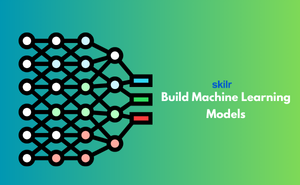👇 CELEBRATE CLOUD SECURITY DAY 👇
00
HOURS
00
MINUTES
00
SECONDS

Creating Machine Learning Models involves training computers to find patterns in data and use those patterns for predictions. Instead of writing strict instructions, developers provide examples, and the model figures out how to make decisions on its own. This makes machine learning useful for areas like speech recognition, fraud detection, and customer personalization.
Through this certification, learners explore how to prepare data, choose the right algorithm, and test the accuracy of their models. The goal is to make complex machine learning ideas approachable for anyone with a basic interest in programming and analytics. By applying these skills, learners can develop intelligent systems that bring automation and efficiency to real-world tasks.
This exam is ideal for:
Industry-endorsed certificates to strengthen your career profile.
Start learning immediately with digital materials, no delays.
Practice until you’re fully confident, at no additional charge.
Study anytime, anywhere, on laptop, tablet, or smartphone.
Courses and practice exams developed by qualified professionals.
Support available round the clock whenever you need help.
Easy-to-follow content with practice exams and assessments.
Join a global community of professionals advancing their skills.
No, only basic understanding of statistics and math is required.
Python is the primary language taught in Build Machine Learning Models certification.
Yes, both key categories of machine learning are covered.
No, prior experience is not needed.
Python libraries such as scikit-learn, Pandas, and NumPy are commonly used.
Yes, deployment and integration of ML models are part of the syllabus.
Yes, the course includes practical projects and a capstone assignment.
Yes, it is designed for beginners with some programming interest.
Yes, you’ll be introduced to the basics of neural networks and deep learning.
Beginners in data science, developers, and anyone curious about AI and machine learning.